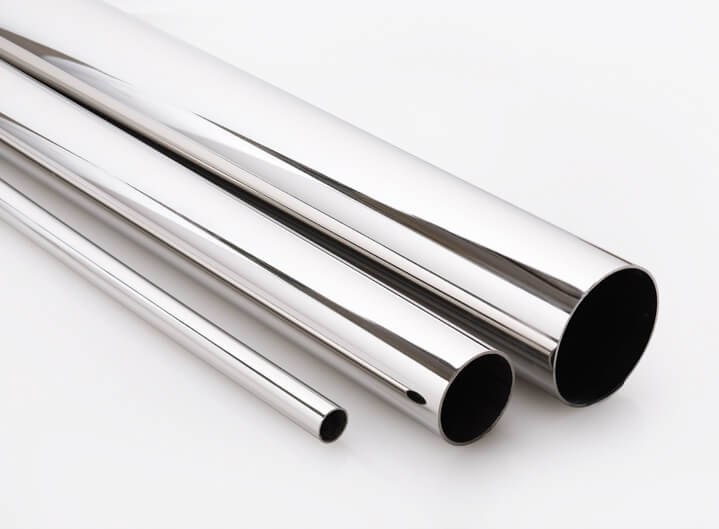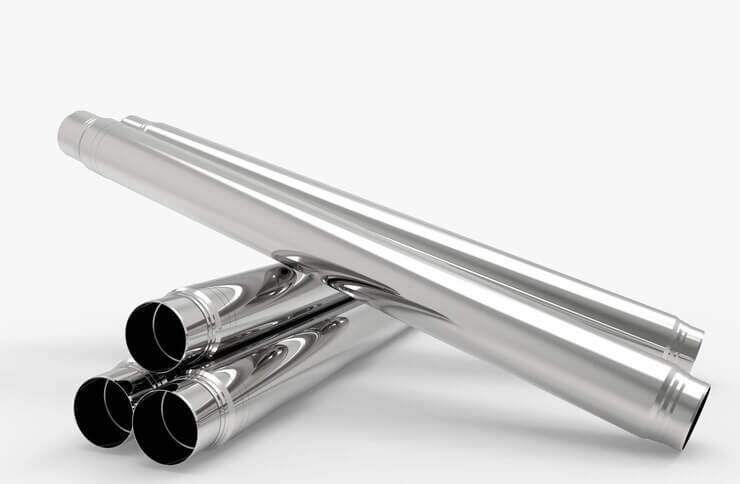304 Stainless Steel Pipes are popular for their strong corrosion resistance and durability. They’re great for building projects, food processing, car parts and decor like handrails or light fixtures. The ASTM A554 SUS304 stainless steel is tough and looks sharp.
Meanwhile, 316L Stainless Steel Round Pipes are made for tough spots. They’re perfect for marine settings, chemical plants, medical tools and food-safe uses where acids or salts are around.
Both 304L and 316L have less carbon than regular grades. The “L” means “low carbon,” which helps with welding. Less carbon stops harmful buildup during welding, keeping welds strong. This makes both good for projects needing welding without losing corrosion resistance.
For homes or less harsh places, 304L works well. 304 stainless steel pipe resists rust, handles heat and stays strong in cold. It’s good for furniture, decor or kitchen tools.
For rough spots like coastal areas or chemical tanks, 316L is better. Its stronger resistance handles saltwater or chemicals well.

304L has lots of chromium (18-20%) and nickel (8-12%), giving it good corrosion resistance and strength. Some 304 stainless steel is food-safe, perfect for food equipment. It’s affordable and clean.
The big difference is molybdenum. 316L has about 2-3% molybdenum, which boosts resistance to salts, acids and alkaline solutions. This makes it great for marine or chemical settings, protecting against damage in salty areas.
Both have similar chromium (around 18%). 316L has a bit more nickel than 304L, which adds toughness and corrosion resistance but costs more.
YUHUA makes high-quality stainless steel pipes that meet global standards. YUHUA: Your Source for 410 Stainless Steel Pipe and Square Tubes! Our products include:
-410 Stainless Steel Pipe
-304 Stainless Steel Pipe
-Stainless Steel Round Pipe
-Stainless Steel Rectangular Pipe
-Stainless Steel Square Pipe
-316Stainless Steel Pipe
Our pipes, in grades like SS201, SS304/L and SS316/L, work for home decor to heavy machines. From sleek wardrobe rails to sturdy tubes for high-pressure systems, we provide quality.
Construction companies use our square tubes for frameworks. Food processors pick our clean round pipes. We serve many fields needing solid tubing.
Our products pass tough quality tests and use advanced welding for smooth, nice-looking finishes. With quick delivery from Foshan City, we’re your trusted tubing partner.
Both are tough. Stainless steel has high hardness and strength, resisting wear and tension. Roughly:
-304L has a strength of ~485 MPa.
-316L is stronger at ~515 MPa, better for stress.
Thanks to molybdenum, 316 stainless steel pipe is common in petroleum and chemical pipelines. It holds up better in high heat or pressure than 304L.

Yes. Both weld well. Low carbon stops harmful buildup during welding, key for strong joints or clean systems.
Both are easy to shape. Stainless steel’s smooth surface resists dust and cleans easily. For 316L, use sharp tools because of its extra alloy parts.
Yes. 316L costs more due to molybdenum. But its better corrosion protection can save on repairs over time.
For mild conditions, 304L is budget-friendly and reliable. In harsh settings like marine or chemical plants, 316L’s durability makes it worth the cost.
For salty areas like coastal zones, go with 316L. Its enhanced resistance to chlorides is perfect for marine environments.
For affordable projects in mild settings, 304L offers good performance at a lower price.
For critical systems like medical tools or offshore rigs, 316L ensures lasting reliability.

Q: Can 304L work in marine environments?
A: It’s okay short-term with care, but not great long-term due to salt sensitivity. Pick 316L for better saltwater resistance with its molybdenum.
Q: Do 304L and 316L look different?
A: No, they look the same. But their 304L vs 316L corrosion resistance varies due to their makeup.
Q: Why does molybdenum matter in 316L?
A: Molybdenum improves resistance to damage, making 316L great for harsh chemicals or saltwater. Its enhanced resistance to chlorides is perfect for marine environments.